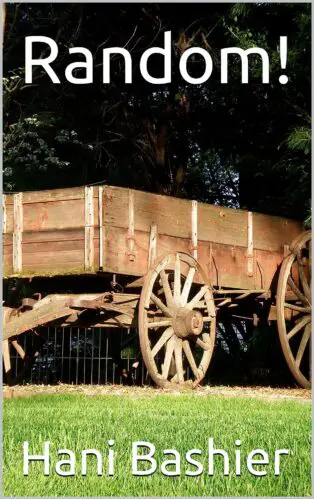Building a Result Chain for MEAL: Principles, Components, and Practical Steps
A result chain is a visual representation of the logical sequence of events that links inputs to activities, outputs, outcomes, and impacts in a program or project. It is a fundamental component of the Monitoring, Evaluation, Accountability, and Learning (MEAL) framework, providing a structured approach to planning, implementing, and assessing interventions. This guide will explore the principles, components, and practical steps for building a result chain for MEAL, covering the following topics:
- Understanding the purpose and principles of a result chain
- Identifying the key elements of a result chain
- Developing a comprehensive result chain
- Using the result chain to inform MEAL activities
- Adapting the result chain over time
- Integrating the result chain into the broader MEAL framework
1. Understanding the Purpose and Principles of a Result Chain
A result chain serves several purposes within the context of MEAL:
- Clarifies the program’s theory of change, outlining the hypothesized pathways and causal links between interventions and their intended results
- Provides a framework for identifying and defining indicators of progress towards the achievement of outputs, outcomes, and impacts
- Facilitates the design and implementation of monitoring, evaluation, accountability, and learning activities, ensuring that they are aligned with the program’s objectives and priorities
- Supports communication and reporting, helping stakeholders to understand the logic, rationale, and assumptions underpinning the program
A result chain is guided by several key principles, including:
- Logical coherence: Ensuring that the relationships and causal links between elements of the result chain are plausible, well-founded, and supported by evidence
- Simplicity: Striving for clarity and simplicity in the presentation of the result chain, avoiding unnecessary complexity or jargon
- Flexibility: Recognizing that a result chain is a dynamic and evolving tool, subject to revision and adaptation in response to new information, learning, or changing circumstances
- Participation: Engaging beneficiaries, stakeholders, and partners in the development, review, and refinement of the result chain, ensuring that it reflects diverse perspectives and priorities
2. Identifying the Key Elements of a Result Chain
A result chain consists of several interrelated elements that represent the sequence of events and causal relationships within a program or project. These elements include:
- Inputs: The financial, human, material, and technical resources required to implement the program (e.g., funding, staff, equipment, facilities)
- Activities: The specific actions, processes, or interventions undertaken by the program to achieve its objectives (e.g., training, advocacy, research, service delivery)
- Outputs: The immediate, tangible products or services resulting from the program’s activities (e.g., trained personnel, research reports, infrastructure)
- Outcomes: The intermediate changes or effects that occur as a consequence of the program’s outputs (e.g., increased knowledge, improved capacity, changed behavior)
- Impacts: The long-term, often transformative, consequences of the program’s outcomes, contributing to broader social, economic, or environmental change (e.g., improved well-being, poverty reduction, sustainable development)
3. Developing a Comprehensive Result Chain
The process of developing a result chain for MEAL involves several practical steps, which can be undertaken iteratively and collaboratively:
- Define the program’s impact: Begin by identifying the ultimate goal or change that the program seeks to achieve, ensuring that it is specific, meaningful, and relevant to the needs and priorities of the target population.
- Identify the program’s outcomes: Next, determine the specific changes or results that are expected to contribute to the impact, focusing on the most critical and plausible pathways of change.
- Specify the program’s outputs: For each outcome, identify the tangible products, services, or activities that are required to bring about the desired change, ensuring that they are feasible, realistic, and within the program’s scope and capacity.
- Map the causal links and assumptions: Develop a visual representation of the relationships between the inputs, activities, outputs, outcomes, and impacts, highlighting the causal links and assumptions that underpin the logic of the result chain.
- Validate and refine the result chain: Engage beneficiaries, stakeholders, and partners in the review and validation of the result chain, incorporating their feedback and insights to ensure its accuracy, relevance, and credibility.
4. Using the Result Chain to Inform MEAL Activities
Once the result chain has been developed, it can be used to guide the planning, implementation, and assessment of MEAL activities:
- Identify and define indicators: Use the result chain to select appropriate indicators for each level of the chain (outputs, outcomes, and impacts), ensuring that they are specific, measurable, achievable, relevant, and time-bound (SMART).
- Design and implement monitoring and evaluation methodologies: Use the result chain to inform the choice of methods, tools, and approaches for data collection, analysis, and interpretation, ensuring that they are aligned with the program’s objectivesand priorities.
- Strengthen accountability mechanisms: Use the result chain to establish clear roles, responsibilities, and expectations for the delivery of results, enhancing transparency, reporting, and communication with beneficiaries and stakeholders.
- Foster learning and adaptation: Use the result chain to identify opportunities for learning, reflection, and continuous improvement, incorporating lessons learned and best practices into the ongoing design and implementation of the program.
5. Adapting the Result Chain Over Time
A result chain is not a static document; it should be subject to regular review, revision, and adaptation in response to new information, learning, or changing circumstances. This process can be facilitated by:
- Establishing a schedule for periodic review and update of the result chain, ensuring that it remains current, relevant, and aligned with the program’s objectives and priorities.
- Engaging beneficiaries, stakeholders, and partners in the review and adaptation process, creating opportunities for dialogue, feedback, and shared learning.
- Monitoring changes in the external context, such as shifts in policy, funding, or stakeholder priorities, and updating the result chain to reflect these changes as needed.
- Documenting and communicating any changes to the result chain, including the rationale for the changes and their implications for the program’s objectives, indicators, and MEAL activities.
6. Integrating the Result Chain into the Broader MEAL Framework
A result chain is an essential component of a comprehensive MEAL framework, which encompasses a range of tools, methods, and approaches to support the effective planning, implementation, and assessment of programs and projects. To ensure that the result chain is fully integrated into the MEAL framework:
- Align the result chain with the program’s strategic plan, ensuring that it reflects the program’s vision, mission, objectives, and priorities.
- Link the result chain to other MEAL tools and processes, such as the logical framework, monitoring and evaluation plan, and learning agenda, ensuring that they are mutually reinforcing and supportive.
- Use the result chain to inform the design and implementation of MEAL capacity-building and training activities, ensuring that staff and partners have the necessary skills, knowledge, and resources to effectively utilize the result chain in their work.
- Embed the result chain into the program’s reporting and communication processes, using it to articulate the program’s theory of change, progress towards results, and lessons learned to internal and external audiences.
In conclusion, a result chain is a critical component of the MEAL framework, providing a structured and systematic approach to planning, implementing, and assessing the impact of programs and projects. By adhering to the principles of logical coherence, simplicity, flexibility, and participation, and by following the practical steps outlined in this guide, organizations can develop and utilize a result chain that is both robust and adaptable, enhancing the effectiveness, accountability, and learning of their interventions.






